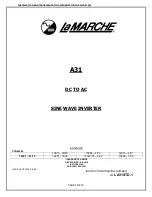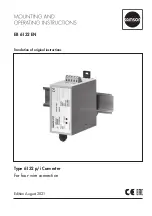
5-27
F18
C50
C32
C37
C42
Bias (Frequency command 1)
, C34
, C39
, C44
Bias (for Frequency 1) (Bias base point)
Analog Input Adjustment for [12] (Gain, Gain base point)
Analog Input Adjustment [C1] (Gain, gain base point)
Analog Input Adjustment [V2] (Gain, gain base point)
When any analog input for frequency command 1 (F01) is used, it is possible to define the
relation
the analog input a
e gain and
adding the bias specified by F18.
As shown
aph belo
ut and the reference
fre
qu
ed by points "A" and "B." Point "A" is
defined
the
combination of the gain (C3
The combination of C32 an
(C1
function), and
at of C42 a
Configure the bias (F18) an
mum frequency as
100%, and the bias base point (C50) and gain base point (C34, C39 or C44), assuming the full
scale (10
ship between
nd the reference frequency by multiplying th
in the gr
w, the relationship between the analog inp
quency specified by fre
by the combination
ency command 1 is determin
of the bias (F18) and its base point (C50); Point "B," by
2, C37 or C42) and its base point (C34, C39 or C44).
d C34 applies to terminal [12], that of C37 and C39, to [C1]
nd C44, to [C1] (V2 function).
d gain (C32, C37 or C42), assuming the maxi
th
VDC or 20 mA DC) of analog input as 100%.
• The analog input less than the bias base point (C50) is limited by the bias value
(F18).
• Specifying that the data of the bias base point (C50) is equal to or greater than
that of each gain base point (C34, C39 or C44) will be interpreted as invalid, so
the inverter will reset the reference frequency to 0 Hz.
Example: Se
fo
og input of 1 to 5 VDC to terminal [12] (in frequency command 1).
tting the bias, gain and their base points when the reference frequency 0 to 100%
llows the anal
















































